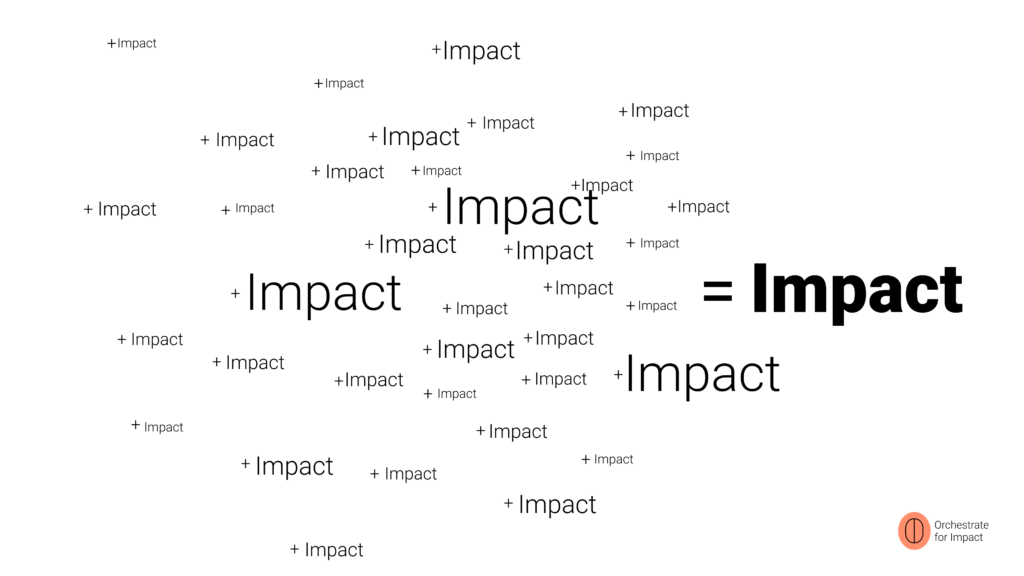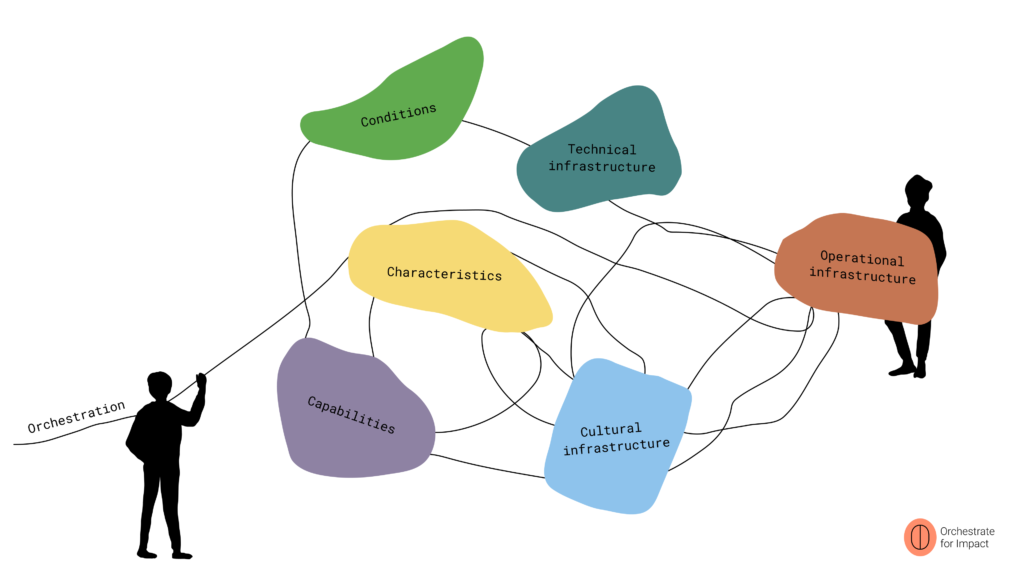Organisations sit within local, national and global conditions, as well as particular industry or value ecosystems. Each sets different expectations, pressures or requirements for how the organisation should (or should not) show up in the world.
Don’t be…
… harmful
… extractive
… abusive
… deceiving
… exploitative
… harassing
… discriminative
… misleading
… wasteful
… self-serving
Do be…
… sustainable
… responsible
… equitable
… ethical
… local
… innovative
… safe
… contributory
… engaging
… effective
… solvent
… accessible
… supportive
… compliant
… competitive
… circular
… regenerative
… resilient
Oh, and do all of this while also delivering the purpose of why your organisation exists.
These can feel like values-alignment for some organisations, or a bureaucratic and regulatory burden for others.
Organisations often struggle to know what it actually looks like to BE (or NOT BE) these things, let alone how to get things in place to actually become or avoid these conditions.
This can become particularly tricky when it becomes one area’s responsibility to ensure the entire organisation is aligned or avoidant of these conditions. Even more challenging, when teams and individuals are expected to figure it out where they are with little guidance on how.
While this is where the power of orchestration is needed, there needs to be clarity on what organisational elements are necessary for the intended impact.
Let’s look at an example.
Example: Dialing up the “Social” in ESG
A commercial organisation has made commitments to its local community to be a positive economic and social driver of impact. They’ve put it in their annual reports as something to report on. It’s stated as a strategy. Let’s imagine that the organisation has gotten pushback from the community and from employees, dissatisfied with the progress.
What should they do?
1. Define impact
We have to understand what impact actually looks like. An intention like ‘social, community impact’ is an expansive, complex concept. It inherently is made up of many things, many layers, and not achievable by one organisation or one individual alone. So, to be realistic, a more helpful and pragmatic framing might be: “What aspects of local social challenges and opportunities can and will our organisation contribute to?”
With those spaces identified, what do we want our contributions to be doing in those spaces? What are the smaller impacts we can be responsible for, that ultimately accumulate and contribute to the larger impact?
In this example, perhaps the contribution the organisation wants to specifically have is economic impact, fostering the small business ecosystem through partnerships and supply chain as well as local job creation.

2. Describe the signals and evidence
So now that we’ve defined the nature of the contribution and impact, we work backwards.
What are the signals we might see, tangible and intangible, that would suggest our organisation is actually contributing to what we say we want to impact?
Let’s take fostering the local small business ecosystem. Some signals might be:
- Leadership and guidance. How do leaders talk about the importance of supporting communities? Of why it’s good business to be contributing locally? For how this connects and reflects to the organisation’s mission and values? How embedded is this reflection in the everyday versus being spoken about at annual reporting time?
- The supply chain and external service ecosystem that the organisation has set up. How much of the organisation’s purchasing power is being spent using the services of local businesses?
- The annual or long-term budget. Have we indicated how much of our external spend should be spent locally? Have we indicated which kinds of partner organisations we want the spending with?
- The translation of policy into process and ways of working. Have we built policy implications into workflow, procurement processes, contract structures and going out to the market strategies? Have we built it into delegations, OKRs, or product/service roadmaps?
- The measurement & reporting frameworks. Does the organisation have a sense of how much should be spent locally? Is there a way to keep track of and trace decisions so it can be measured?
A critical thing to keep in mind is that these signals are not just quantitative, countable signals. Some of these signals are really about indicating that intentions have been integrated into the fabric of the organisation, into the places that will ensure, or at least make more likely, that the micro-decisions and actions we take everyday are in line with the types of impacts we want to have.
3. Describe the organisational elements needed
So now that we know what kinds of signals would suggest that the organisation is contributing to the impact it aspires to have, now we go backwards still.
If those are the types of signals that suggest we are or are not contributing directionally towards the impact, then we need to ask the question: What organisational elements need to be in place to have those types of signals?
Let’s look at the translation of policy into process and ways of working and take one of the potential signals, that buying local is built into the procurement process.
First off, is it?
If not, where would the consideration for buying local need to be to ensure it’s happening more of the time than just happenstance?
Once you can see where it would need to be, then assess what would it take to build that in?
It might be in CAPABILITIES and how we train our people to run a procurement process and buy for the organisation.
It might be in CONDITIONS where we openly encourage this as an organisational imperative.
It might be in OPERATIONAL INFRASTRUCTURE where we build in the consideration into the brief-writing process and perhaps the templates for that support.
It might be in TECHNICAL INFRASTRUCTURE where the self-help support modules on the intranet describe how to look locally in the market when starting your market scan.

By breaking down the big thing into the components, we can actually focus on getting the elements in place to be orchestrated.
Gone are the days of expecting individuals in orgs to have to hold and integrate all of this on their own, and do the constant calculating of decision-making.
Orchestrators, see the important role you’re playing in your organisations and in your teams! Help your organisations break down the complexity into the elements that will best set the stage. Design and build your intentions into your organisational environments. Embed them into practice. Reduce friction by making the actions towards (or away) from intended outcomes and impacts ‘just the way it is’.
Calling fellow orchestrators! Are you someone responsible for orchestrating for impact? Welcome! Follow & chat! Let’s connect!
Let’s create new ways of understanding and orchestrating organisations.
Let’s celebrate the stories of orchestrators finding success and impact in their organisations.
Let’s understand the organisational elements needed to get to the impacts we aspire for.
Let’s believe that organisations can be a positive force for a better tomorrow.

